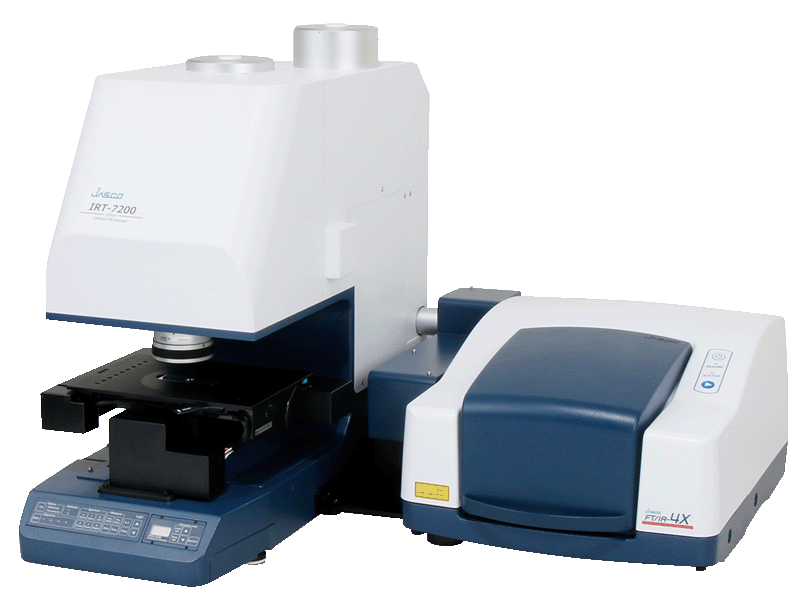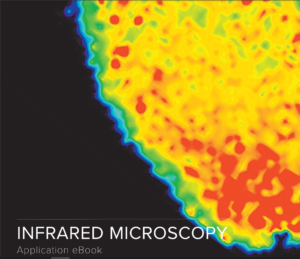FTIR micro-spectroscopy is an analytical technique for imaging materials using functional group(s) for sample identification, surface analysis, multilayer film characterization, and particles characterization. Requiring minimal sample size and preparation, measurements can be made without lengthy procedures to manipulate samples or the use of solvents that would create additional laboratory waste.
The use of an IR microscope allows the evaluation of small sample areas to provide useful information for quality control in manufacturing, product development, and failure analysis. The non-destructive nature of IR micro-spectroscopy means that fragile samples, such as biomedical and medical samples, can be readily analyzed. Samples can also be subjected to further analysis by complementary spectroscopic and non-spectroscopic measurements including Raman, UV-Visible and fluorescence.
Upon collection of a spectrum, an ever-growing range of spectral libraries can be used to assist in sample identification. Alternatively, through functional group analysis using characteristic absorption bands in the spectra, structural elucidation can be achieved to identify unknown molecular structures for newly created materials, foreign materials in a sample (i.e. forensic studies), or a mixture of compounds (which can also be identified from spectral library searches).

There are several measurement methods that can be employed in IR micro-spectroscopy, including
transmission, reflection, and Attenuated Total Reflectance (ATR).
Transmission FTIR Microscopy
Transmission microscopy is one of the most common methods for analyzing solids, liquids, and gases, and it is the method of choice for analyzing films, laminates, and fibers. For successful transmission measurements, light is focused through the sample using a size-adjustable aperture and then collimated by a condenser onto a detector. Samples must be relatively thin (less than 50 μm) to allow the light to adequately pass through the sample. Transmission measurements provide the highest sensitivity and best detection of all IR sampling techniques.
Reflection Absorption FTIR Microscopy
Reflection measurements work best for reflective materials, but it is not effective for dark materials or non-reflective substrates. Reflection measurements are performed with a single Cassegrain objective, which uses a primary and secondary mirror to direct the IR beam onto the sample and return the reflected light to the detector, typically with angles from 25 – 35° depending on the magnification of the Cassegrain objective.
Attenuated Total Reflectance (ATR) FTIR Microscopy
An ATR sampling accessory consists of a series of focusing mirrors that direct the spectrometer’s IR beam into a crystal prism (typically at a 45° angle, but for optimal measurement, the angle can be different for some ATR accessories including ATR microscope objectives). Even though total internal reflection occurs within the prism, an evanescent field is propagated from the crystal surface into the sample that is in intimate contact with the prism; for solid materials this requires a device to compress the material against the prism. Following molecular interaction with the light, the waveform is passed onto the detector. The prisms used in ATR accessories are selected according to specific application requirements and can be manufactured from IR transmissive crystal materials, including diamond, zinc selenide (ZnSe), zinc sulfide.






